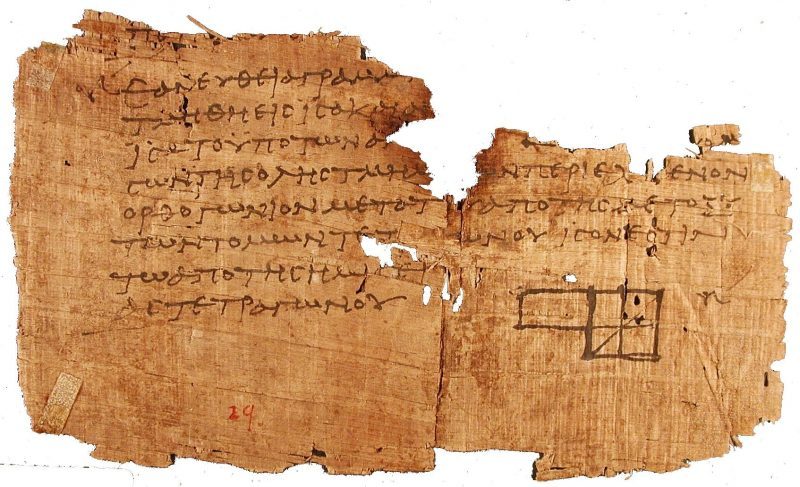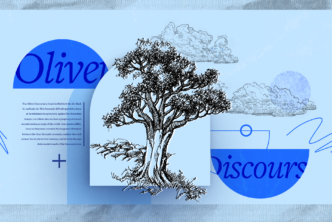
Over 70 volumes of the Oxyrhynchus Papyri (P.Oxy.) have been published in print. These volumes are expensive and typically available only in well-stocked libraries. But the first 15 volumes (1898–1923), covering over 1,800 ancient papyri retrieved from the sands of Oxyrhynchus, will soon be available for Logos Bible Software. That includes the transcriptions, the photographic plates, the notes and commentary on contents, the discussion of dates and importance, and more. All of this material, from cover to cover of the first fifteen volumes, is included in the Logos edition.
It is difficult to overstate the importance of the Oxyrhynchus Papyri. Bernard P. Grenfell and Arthur S. Hunt arrived at Oxyrhynchus in 1896 for their first dig. Why Oxyrhynchus? Because it was a large city in the fourth century, and Grenfell and Hunt supposed that the garbage dumps there might provide witness of written material from times earlier than the fourth century CE.
That’s right. They went to an ancient garbage dump looking for writings that people had thrown away. And they found those writings — and so much more.

In a story that sounds almost apocryphal (but is nonetheless documented), after three weeks of work they located the first papyrus of their dig: P.Oxy. 1. Grenfell and Hunt called it the Logia Iesou, or “Sayings of Jesus.” It was a Christian document the likes of which had never been seen before. Today (thanks to the finds at Nag Hammadi in 1945) we know that this was material from the Gospel of Thomas. But then, in 1896, it was a sensation. Transcriptions and translations appeared in newspapers. Grenfell and Hunt published a popular edition with transcription and translation in 1897: ΛΟΓΙΑ ΙΗΣΟΥ: Sayings of Our Lord from an Early Greek Papyri. Anyone and everyone who had a name in Biblical studies or antiquities published their opinion on this new papyrus in whatever outlet they could find.
The garbage dumps at Oxyrhynchus, however, had many more textual wonders to yield. Material from the Greek Old Testament (LXX) and the Greek New Testament was discovered. Several of the earliest available witnesses to the Greek New Testament were, in fact, located in the Oxyrhynchus rubbish heaps. See, for instance, P.Oxy. 2, the start of Matthew’s gospel, which is dated to the third century. And P.Oxy. 3, fragments from Mark’s gospel, are believed to be from the fifth or sixth century.
Grenfell and Hunt describe the size and scope of the finds at Oxyrhynchus in their very first printed volume:
The hundred and fifty-eight texts included in this first volume of the Oxyrhynchus Papyri are selected from the twelve or thirteen hundred documents at Oxford in good or fair preservation which up to the present time we have been able to examine, and from the hundred and fifty rolls left at the Gizeh Museum. The bulk of the collection, amounting to about four-fifths of the whole, has not yet been unpacked.
I read this as stating there were 1,200–1,300 documents at Oxford, and that is approximately one-fifth of the whole, making the total at that point around 6,000 documents. That was in 1898, after only one season of digging.
One source lists the total number papyri retrieved by Grenfell and Hunt over all of their digs at Oxyrhynchus as significantly higher: “Grenfell and Hunt conducted four more seasons of excavations at Oxyrhynchus (1903–1907), finding a total of around 500,000 papyri.”

There are, in fact, so many papyrus leaves and fragments that in 2011 the Oxyrhynchus team at Oxford University launched a project called Ancient Lives which was designed to crowdsource transcriptions of unedited papyri, to provide a sort of “top of the funnel” to the huge mass of papyri that have yet to be studied to prioritize the remaining papyri for further study (see below how to join in this effort).
And this is one of the primary values of a collection like the first fifteen volumes of the Oxyrhynchus Papyri: it provides a witness to several different aspects of ancient city life. The documents are not limited to Christian material. There are legal and military documents. There are personal letters. There are fragments from classical authors, both known and unknown works. There is documentation of property disputes, slave registrations, public works projects, arrests, petitions, wills, revocation of wills, and even invitations to parties. There are leases, documents of marriage and divorce, complaints of extortion, loans, payments of bail for prisoners, letters of recommendation, and all sorts of other correspondence within the horde of papyri excavated from Oxyrhynchus.
The Oxyrhynchus papyri are priceless source documents of city life in fourth-century Egypt. They show us the humanity of the ancients, that these were real people, with real lives, real problems, real trials, and real joys, who needed pen and papyrus to function in their contemporary world. And they show us that, in the midst of the lives these people led, the Scriptures were exceedingly important to them.

Rick manages the Content Innovation department at Faithlife, a team focused on original language analysis, reverse interlinear textual alignments, and creation and analysis of Bible data. He lives in Bellingham, WA with his wife, Amy, and their children Ella, Lucas, and Josiah.

For more information on the Oxyrhynchus Papyri, visit Oxford Universities site, Oxyrhynchus: A City and its Texts, Virtual Exhibition.
To participate in the ongoing transcription, measuring, and cataloguing of the Oxyrhynchus Papyri, visit the Ancient Lives Project for more details.





